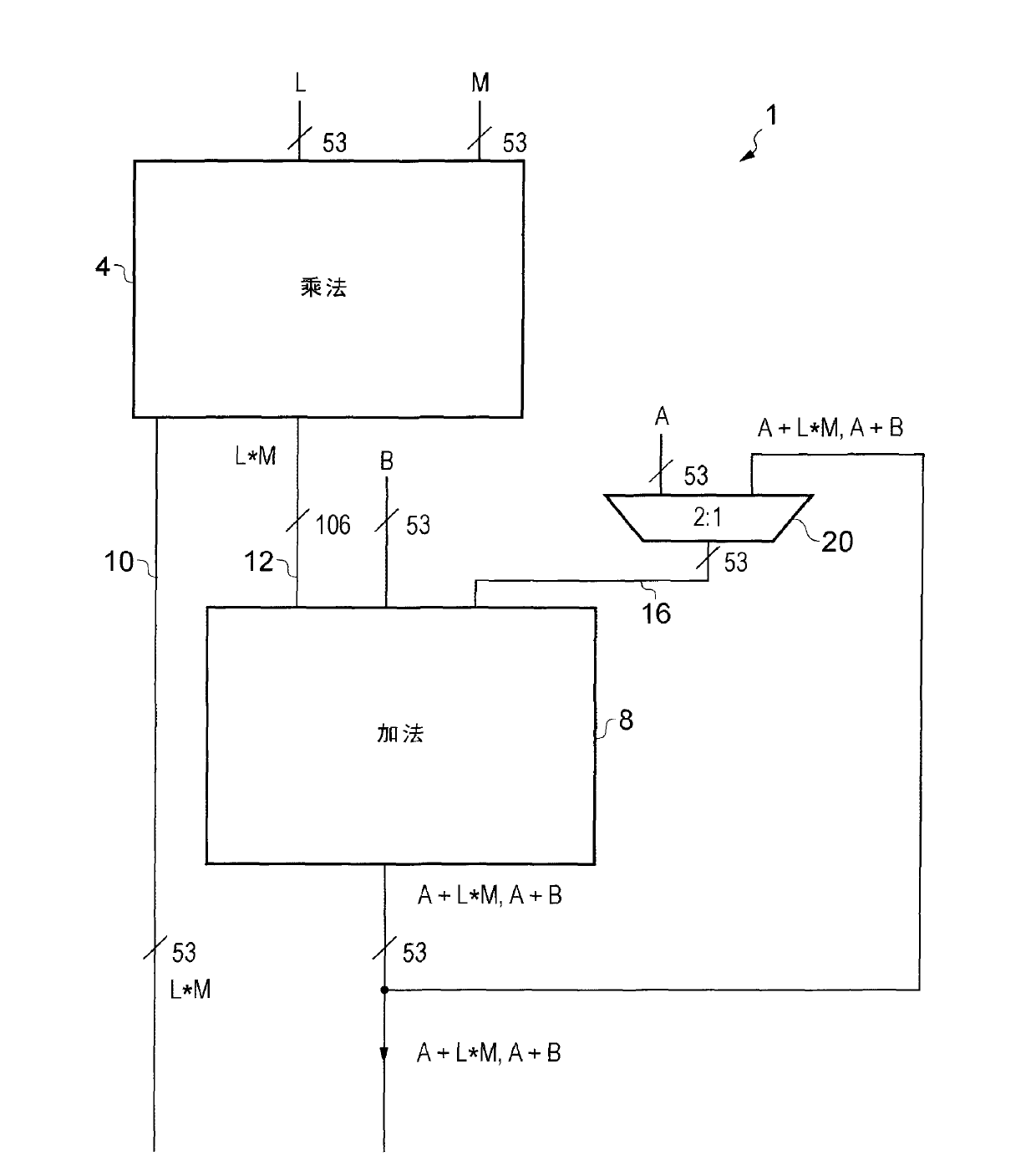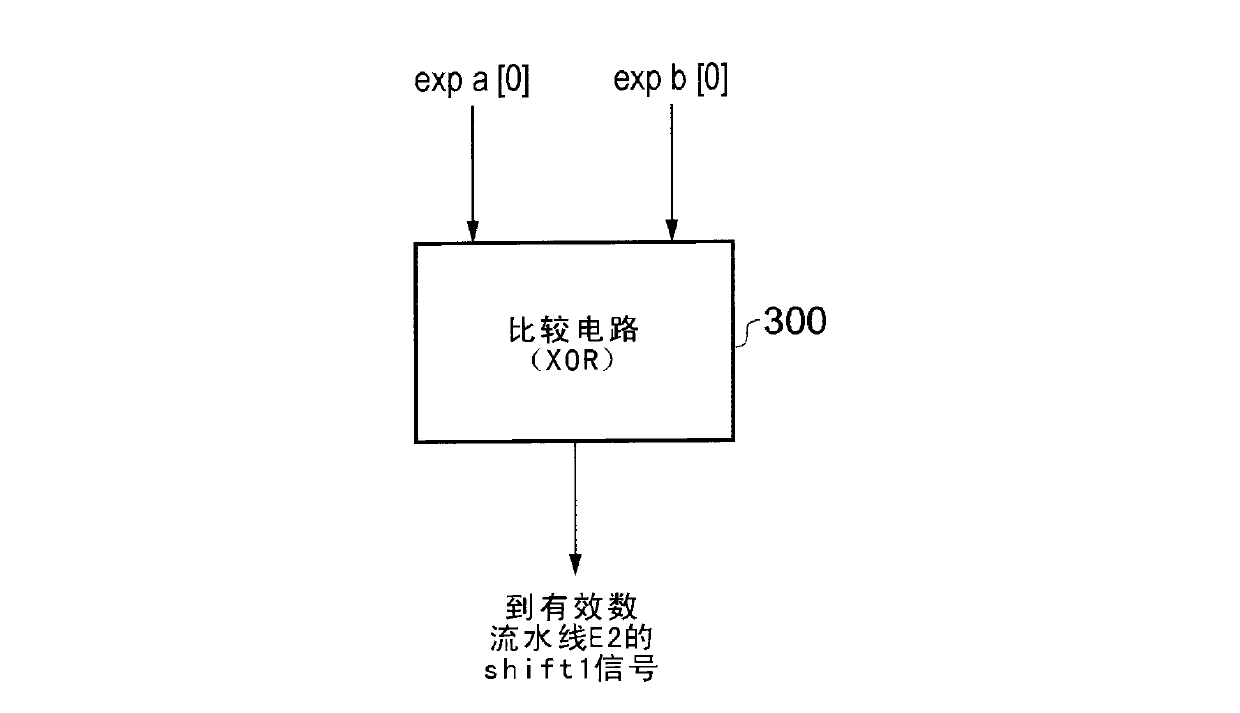Leading zero prediction in floating point addition
A floating-point value and adding circuit technology, which is applied in the direction of instruments, data transformation, electrical digital data processing, etc., can solve problems affecting the performance of adder units, etc.
- Summary
- Abstract
- Description
- Claims
- Application Information
AI Technical Summary
Problems solved by technology
Method used
Image
Examples
example 1
[0122] LSA, classic far path (example of LSA shifted right forever)
[0123] 1.011e4
[0124] +1.101e2
[0125] Before adding, we need to make the exponents the same, so the smaller number has to be shifted right two places.
[0126]
[0127] refer to figure 2 , in the example above, the output 180 of the LZA would be ignored, the smaller operand would be right shifted using the right shift circuit 200, and the output from the add0 adder 260 would be selected since there was no overflow.
example 2
[0129] USA shifts right, classic far path
[0130] 1.011e4
[0131] -1.001e2
[0132] Before subtracting, we need to make the exponents the same, so the smaller number has to be shifted right two places by the right shift circuit 200 .
[0133]
[0134] Subtraction is done in two complementary arithmetics by inverting the subtrahend and adding to the minuend (minuend - minuend = difference). We also left-shift the subtraction by one position and decrement the exponent so that the exponent works (it's a subtraction, so the exponent can be smaller than what we started with, but it can't be larger). We let add0 handle the case where the exponent gets smaller, and let add1 handle the case where the difference "overflows". refer to figure 2 , in one embodiment, the above can be achieved by adding logic to converter 165 in stage E2 to invert the subtrahend, adding logic to both multiplexers 205, 210 in stage E3 to left shift the two valid and then a 1 value as another input...
example 3
[0140] USA with the same exponent, left shift required, classic short path
[0141] 1.110e4
[0142] -1.100e4
[0143] Converting to two complementary additions, this becomes:
[0144]
[0145] The result is not a normalized number (a normalized floating-point number should be in the form of 1.xxx multiplied by an exponent). So what we do is use the LZA output 180 to tell us how much to left shift both operands, and then use the left shift circuits 190, 195 to perform the required left shift. In this case, the predicted LZA is 3, so the addition becomes:
[0146]
[0147] The carry-out means that the correct answer comes from the overflow adder 250, which has an exponent higher than one, ie:
[0148] 1.000e2
PUM
 Login to View More
Login to View More Abstract
Description
Claims
Application Information
 Login to View More
Login to View More - R&D
- Intellectual Property
- Life Sciences
- Materials
- Tech Scout
- Unparalleled Data Quality
- Higher Quality Content
- 60% Fewer Hallucinations
Browse by: Latest US Patents, China's latest patents, Technical Efficacy Thesaurus, Application Domain, Technology Topic, Popular Technical Reports.
© 2025 PatSnap. All rights reserved.Legal|Privacy policy|Modern Slavery Act Transparency Statement|Sitemap|About US| Contact US: help@patsnap.com



